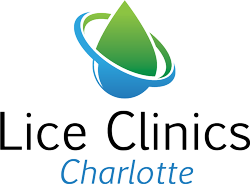How Fast Does Lice Spread

Lice infestations are common and notorious for their spread, but how fast does lice spread? It is a common question we get asked frequently about head lice. Our lice experts are here to answer your questions about how fast lice spread!
Head lice cause distress to those they infect and communities at large. Understanding the why and how behind the spread of these parasites is vital to effectively and efficiently control an infestation and prevent future ones. When you have head lice for too long, there can be consequences.
If it’s your first time dealing with lice, you probably have questions like “How fast does lice spread?” and “Can lice eggs spread?” At Carolina Lice Removal, we know how frustrating having head lice can be. And how disturbing it is to not have all the information you need to handle unexpected lice cases properly. That’s why we’ve compiled our expertise in this short guide to help you learn to identify how lice can spread so fast.
How Does Lice Spread?
Lice have been around for a while, and it wasn’t always clear how they spread. Through decades of research, we now have a map of the clear pathway of how lice spread among us. Here’s what you need to know about how head lice spreads.
Lice Spread Through Head-to-Head Contact
When infected by lice, you can be bitten up to five times per day by hundreds, or even thousands, of these tiny parasites that cause an allergic reaction. While this happens, anyone you come in close contact with can also become victim to lice, as they can walk or “jump” to different hosts – the scalp or body they eventually land on.
While they aren’t actually jumping, they do move quickly from one host to another by crawling along your hair strands. Head-to-head (hair-to-hair) or body-to-body contact is the most common way lice spread.
Who Are Most at Risk for Head Lice Spread?
Younger, elementary-aged children are often the unofficial primary target for lice infestations because they are more likely to engage in close proximity activities, such as playing together or sharing personal items like hats and combs.
Gathering in crowded places like schools or daycare centers increases the risk of lice transmission. The close quarters provide ample opportunities for these tiny parasites to crawl from one host to another, facilitating the rapid spread of infestations.
While adults and babies can get head lice, they are usually less likely to contract them since they have more limited exposure. However it is not impossible to contract head lice and if they come in contact with someone who has lice, they should check themselves regularly to ensure the lice did not spread.
Sharing Personal or Household Items Can Spread Lice
Lice can also spread by sharing personal or household items, such as brushes, blankets, hats, pillows, and headphones. When an infested person shares these items with others, lice or their eggs, known as nits, can be transferred, initiating a new infestation. However, you may not know if you have lice, making this problem even more challenging.
We hear complaints about this daily. Educating yourself and your children about the importance of not sharing personal items is crucial to prevent the easy transmission of lice. Regular, routine checks for lice and nits can be an effective preventive measure, especially after social activities or events where items might be shared.
How Fast Can Lice Spread?
While lice infestations are known for spreading quickly, the speed is actually influenced by different factors, like how many hosts are within their reach and the frequency of close contact. Here’s a closer look at each of these contributors to the speed of lice infestations.
Lice Reproduction Rates
Lice reproduce quickly in mass quantities, with adult females being capable of laying between four and eight eggs per day. These eggs hatch within seven to ten days, morphing into nymphs, the next form the lice take, and mature into adult lice within 10-14 days.
The rapid lice life cycle contributes to the potential for an explosion of infestations, especially in environments with many potential hosts. The more hosts, the more opportunities they have to spread. However, a single infected individual can quickly lead to a widespread outbreak if not identified and treated promptly.
Close Living Quarters Can Be a Breeding Ground for Head Lice
Living near others, like large shared households, college dorms, or summer camps, permanently or temporarily can significantly impact the speed of lice spread. Crowded living conditions provide ample opportunities for lice to move from person to person.
If you do live in shared or close living quarters then it is imperative that you perform regular lice checks. By catching head lice early you can seek treatment faster and prevent a more severe infestation.
Can Lice Eggs Spread?
One of the most widely perpetuated myths about lice infestations is that lice eggs, or nits, can contribute to faster spreading. Understanding why this isn’t true is crucial in developing effective lice control strategies.
Unlike adult lice, nits firmly attach to parts of your hair near the scalp. They can’t move independently and are unlikely to spread on their own. However, the transmission risk becomes more concerning when infected individuals come into close contact with others.
The only way that nits may be transferred is if two people share personal items like the ones mentioned above. It’s essential to break the transmission cycle and regularly check for nits. Make sure that you know what lice look like so you can identify them. They can be difficult to spot, but regular scalp inspections can save you lots of stress in the future!
The Final Question – Does Lice Spread Easily?
Not everyone is equally susceptible to lice infestations. Factors such as hair type, personal hygiene, and genetic factors can influence a person’s likelihood of getting lice. Lice find it easier to move through hair strands, but even people with short or buzzed haircuts can become infested with lice.
The Lice Clinics Removal Is Here to Provide Professional Lice Treatment
Do you feel like you have an answer to your initial question, “How fast can lice spread?” We hope so! If not, here’s a quick review:
- The speed of lice spread is influenced by various factors, including how they move from person to person, the conditions of places you live, work, or attend school, and the reproductive capabilities of lice.
- Lice eggs can’t spread, but they can hatch before you get the chance to address the problem – speeding up the transmission process.
- Understanding how lice spread and how fast the spreading process is essential to determine which prevention and control strategies are most effective for your lice infestation.
At the Lice Clinics of Charlotte, we understand the urgency of addressing rapidly spreading lice infestations. With our expert team and specialized one-time treatments, we are committed to providing swift and practical solutions to eliminate these pesky parasites’ current and potential consequences.
You can count on Carolina Lice Removal to offer the care and support you need, helping you find a solution to lice infestations. Contact our lice experts today to get professional treatment.
